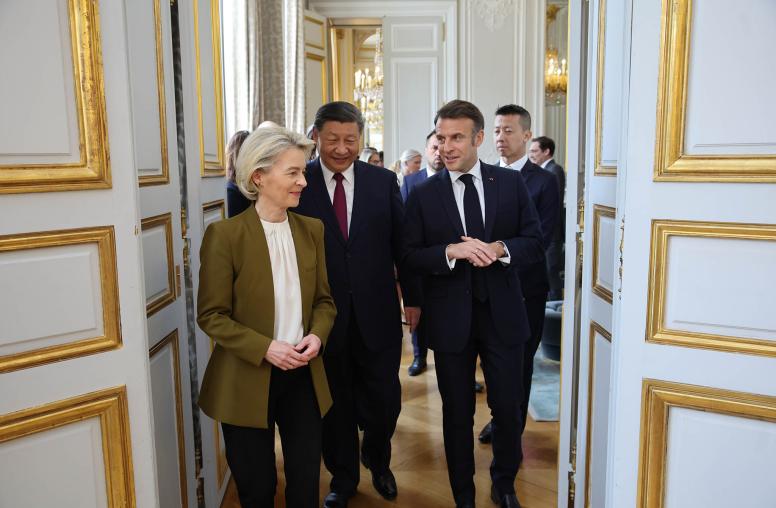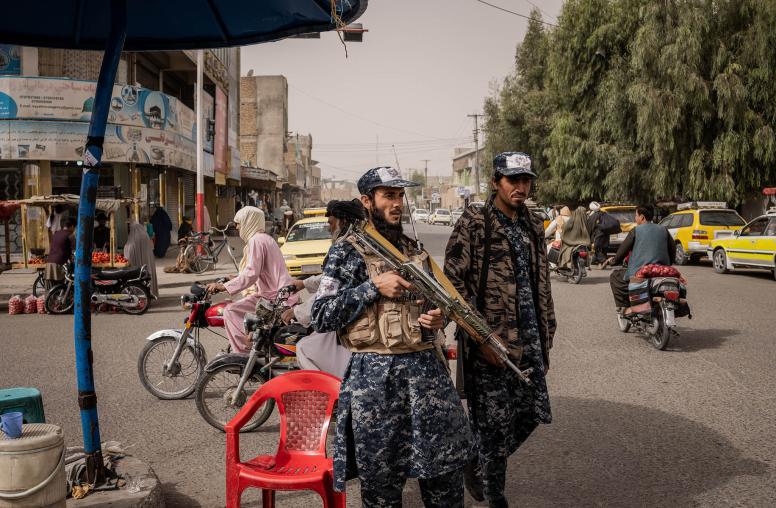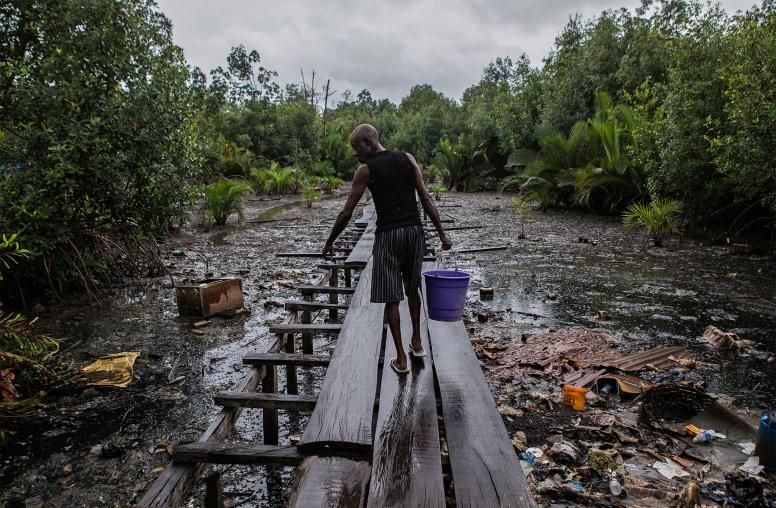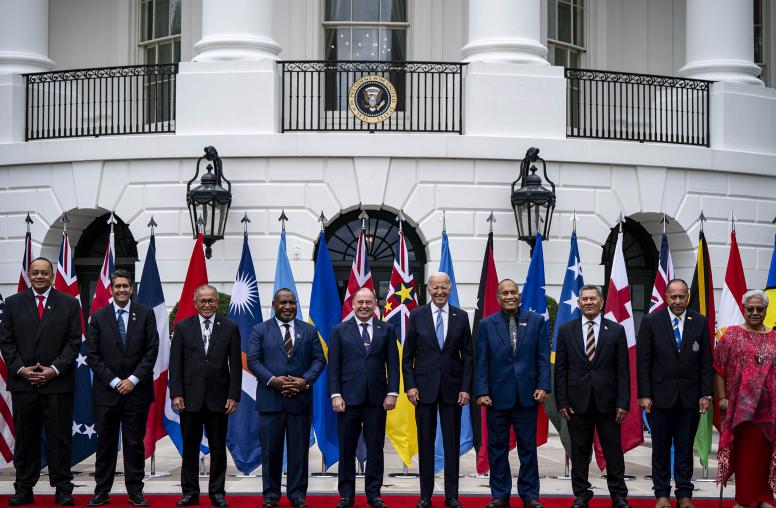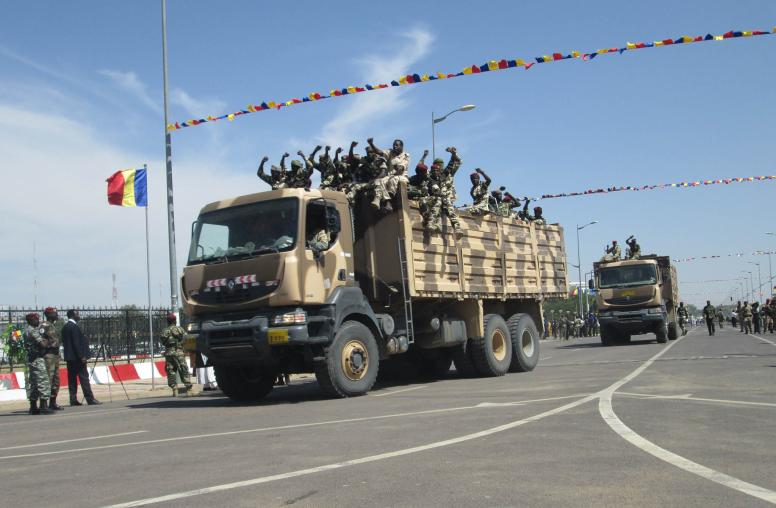Terror on the Internet: The New Arena, The New Challenges
Gabriel Weimann, Senior Fellow
Introduction
In a recent USIP Special Report, senior fellow Gabriel Weimann noted that while politicians and the media have hotly debated the dangers that cyberterrorism poses to the Internet, surprisingly little is known about the threat posed by terrorists' use of the Internet. How are terrorist organizations using the Internet? What tools are available to policymakers in the United States and beyond to combat terrorists in this "virtual front" in the war on international terrorism?
On May 13, 2004, the Institute hosted a presentation by Gabriel Weimann on "Terror on the Internet: The New Arena, The New Challenges." Drawing from his research over the past seven years, Weimann discussed the advantages of the Internet for such organizations, the varieties of rhetoric employed in the web sites, and the dilemmas of and options available for countering terrorist use of the Internet.
Gabriel Weimann is a prominent and prolific analyst of international terrorism and the mass media, and professor of communications at the University of Haifa, Israel. Since 1997, he has led a large research project that has catalogued and tracked hundreds of web sites used by terrorist organizations and their affiliates to recruit and mobilize supporters, to raise funds, and to plan and coordinate attacks. His publications include five books—among them The Theater of Terror: The Mass Media and International Terrorism, Communicating Unreality: Mass Media and Reconstruction of Realities, and Hate on Trial: The Zundel Case—and more than 100 book chapters and articles on conflict, terrorism, the mass media information technologies, and the Internet.
Report Summary

An image from al Qaeda's web site features a "cracked" or broken computer which indicates a potential cyberattack.
In order to understand the motives and strategies of terrorists on the Internet since 1998, Gabriel Weimann has examined the web sites of terrorists and applied a multi-faceted analysis of their written, visual, and audio content. Discussing his work at the Institute during his fellowship, he identified four primary questions upon which his research has focused:
- Who are the terrorists on the Internet?
- How do the terrorists use the Internet?
- What are the rhetorical tactics of terrorist sites?
- How should democracies respond to these activities?
Examining the Nature of Terrorism on the Internet
Weimann opened his presentation by noting that, "cyberspace has now become a new conflict arena—a global arena." Indeed, by its very nature, the Internet is an ideal arena for activity by terrorist organizations. Most notably, it offers: easy access; little or no regulation, censorship, or other forms of government control; potentially huge audiences spread throughout the world; anonymity of communication; fast flow of information; inexpensive development and maintenance of a web presence; a multimedia environment (or the ability to combine text, graphics, audio, and video) that allows users to download films, songs, books, posters, and so forth; and finally, the ability to shape coverage in the traditional mass media, which increasingly use the Internet as a source for stories.
Weimann reported that when he began his research in 1998, nearly half of the 30 groups designated as foreign terrorist organizations by the U.S. State Department maintained web sites. By 2004, all 37 terrorist groups had established their presence on the Internet and most of them in more than one form. In fact, he noted that not only do terrorist organizations maintain sites in multiple languages, but even web sites targeted at different age groups, including children, can now be found.
Weimann then demonstrated some of the findings of his research on how terrorists use the Internet for multiple purposes, including:
- psychological warfare;
- publicity and propaganda;
- datamining (i.e. scanning the Internet for publicly available information to plan terrorist activities);
- fundraising;
- recruiting and mobilizing supporters;
- networking between different terrorist organizations;
- sharing information, instructions, how-to manuals, etc.;
- planning and coordination; and
- cyberwar and cyberterrorism.
Weimann stressed that it was not uncommon to find web sites that employed various combinations of the above all in one site. He also emphasized that the ways terrorists were employing the Internet was continuing to evolve—a challenge for both scholars and policymakers trying to understand the nature of online terrorism.
Cyberterrorism: Fact vs. Fiction
Cyberwar and cyberterrorism have been especially appealing to the media and the popular imagination because they combine two prime sources of fear—fear of technology and fear of terrorist violence. While there is some cause for concern about cyberterrorism, it is important to keep in mind that to date there are no documented examples of terrorists using the Internet to launch an attack (such as using a computer to disrupt power grids or take over the control of a plane). In contrast, Weimann presented several examples of more typical uses of the Internet by terrorists such as a web site run by Hezbollah with downloadable games for children and two distinct Tamil Tigers (LTTE) web sites tailored to a local and an international audience.
As the press uses photos, videos, and statements found on terrorist group web sites, the Internet has become a tool to spread terrorist messages through the traditional mass media. This, Weimann noted, provides terrorists with a cheaper alternative to mass printing materials (such as newsletters) or operating their own radio stations.
However, Weimann also pointed out that the Internet provides terrorist groups with several unique abilities that traditional media doesn't such as:
- It provides terrorist greater interactivity than traditional media (radio, television, and print) and allows two way communications—increasing the ability to solicit support; and
- It allows terrorists to deliver messages tailor made to each target audience they are trying to reach.
Further, the Internet allows terrorist to communicate their message to a global audience quickly, anonymously, and without the risks of their message being censored. "You can sit in a coffee shop in London, use a server in South Africa, and send messages to North America without anyone being able to trace you, " Weimann stressed.
How to Fight a 'Virtual' War Against Terrorism
According to Weimann, understanding terrorists' activities on the Internet is only the beginning of the problem; the challenge remains to balance the effort to control these activities with the need to preserve civil liberties. Several government counterterrorist measures have been implemented since the attacks of September 11, 2001. These include the use of "sniffers" such as Carnivore and Magic Lantern which can search for certain information or keywords. In addition, there have been efforts to remove material from web sites or even remove entire web sites. These and other countermeasures force officials and citizens to ask hard questions about what price they are willing to pay, and what opportunities are being lost, in the cyberwar against terrorism.
Realistically, the best approach to preventing abuse of the Internet by terrorists will require both the acceptance of some vulnerabilities and some constraints on civil liberties. Weimann's recommendations for such an "optimal compromise" include:
- Modifying the Patriot Act, especially to increase the transparency of Internet security measures;
- Applying the "social responsibility" model to the Internet (e.g., self-policing by ISPs);
- Encouraging international collaboration (to the maximal extent possible);
- Creating education and counterterrorism sites; and
- Promoting peaceful uses of the Internet for conflict management and resolution (such as explored in the Institute's Virtual Diplomacy Initiative).
In closing, Weimann warned that efforts to fight the war against terrorism both off- and online, should not overshadow or take away from the potential benefits of the Internet to the international community. "Once we only look at the Internet as a battlefield, where they fight us and we have to minimize access," Weimann stressed, "we may miss the opportunity to look at the Internet as a peaceful place, as an arena where nonviolent exchange can take place and even the peaceful resolution of conflict."
For more information on this topic see Weimann's March and May 2004 Special Reports: www.terror.net: How Modern Terrorism Uses the Internet.

